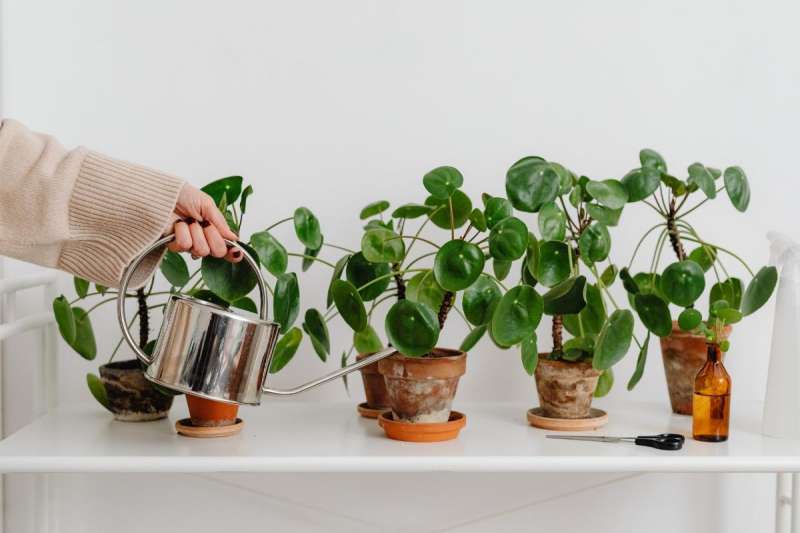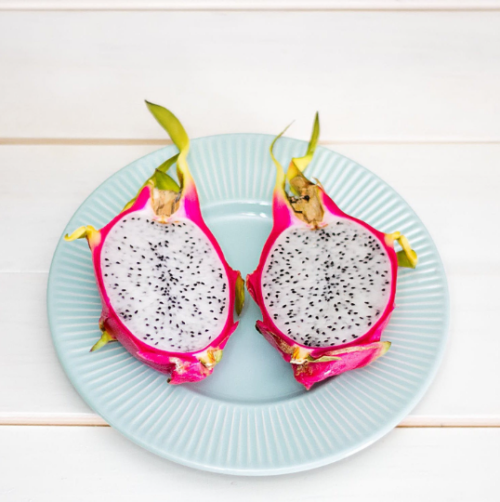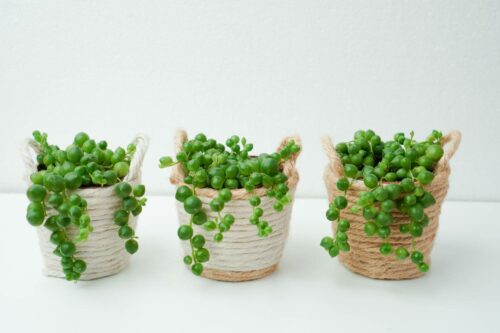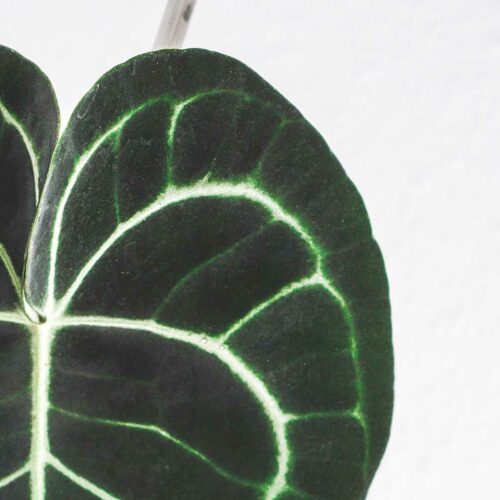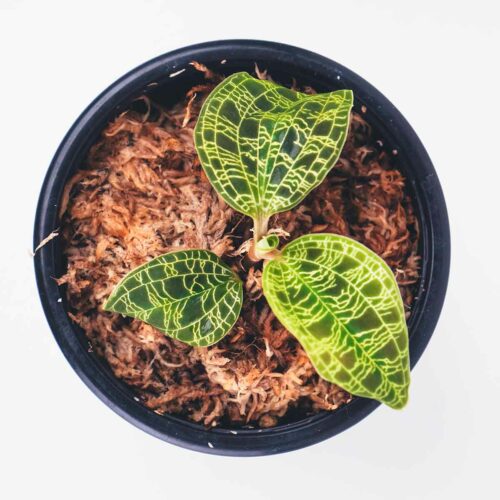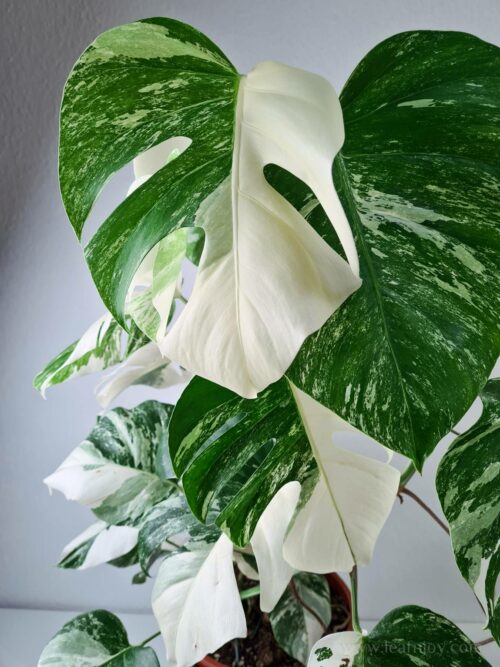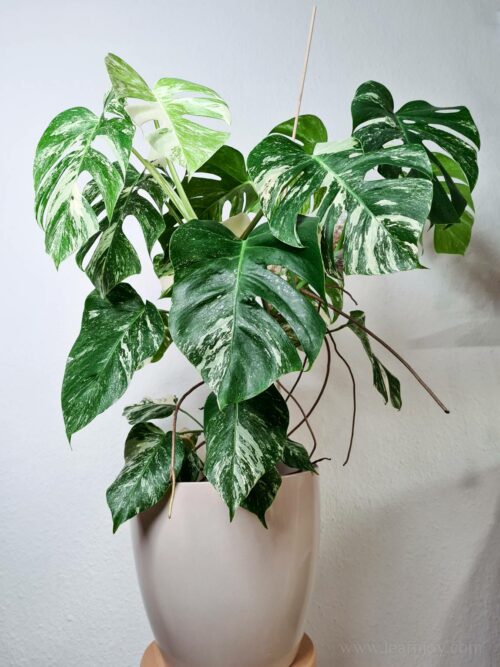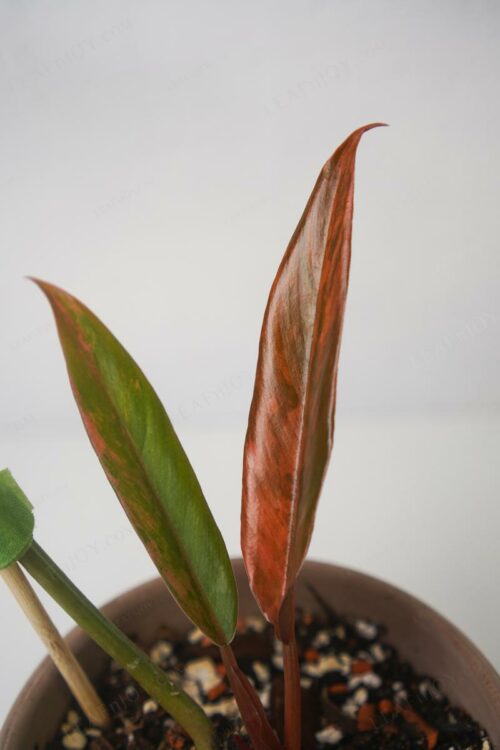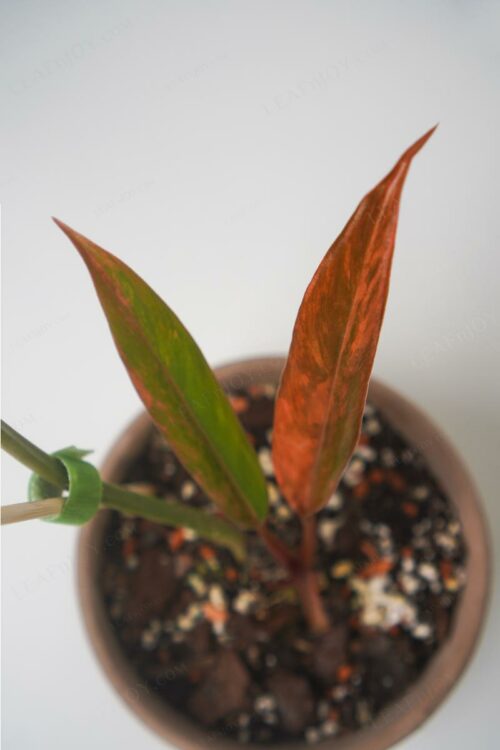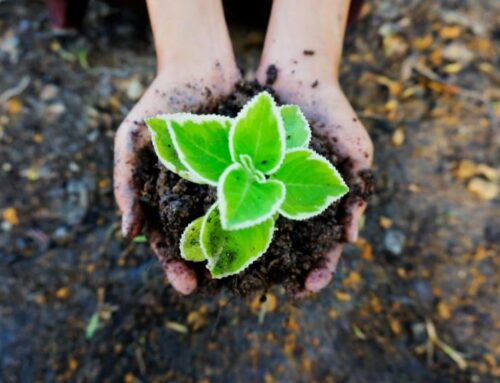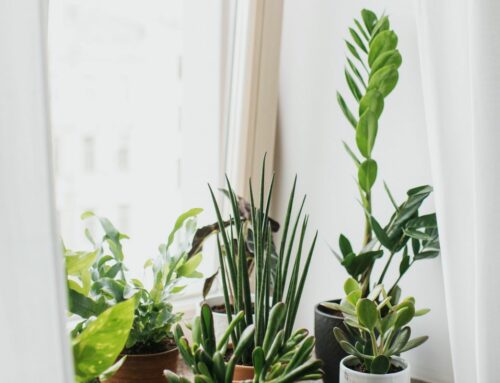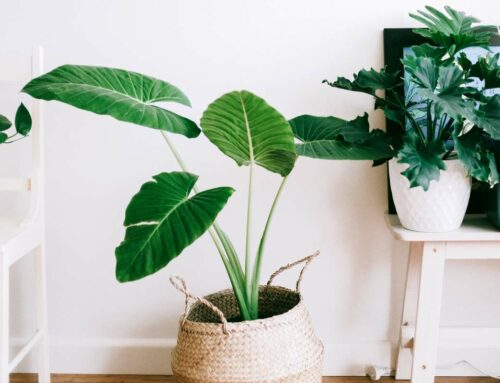How to water houseplants correctly is one of the basic gardening essentials that you will learn early on in your plant-family journey. Watering plants (especially indoor ones) can be tricky as a beginner plant-parent because there are different variables that affect how often a plant needs to be watered.
In this article, you will learn about how to water your plants the right way, when to water your houseplants and common mistakes connected to watering houseplants (and outdoor plants too) that you should avoid.
This post may contain affiliate links. Read our Privacy Policy and Disclosure here.
How to water houseplants 101: Light, humidity, temperature, soil composition, nutrition, and watering are all vital plant care factors that affect the health and growth of both indoor and outdoor plants and trees. Out of all, however, watering is the one that can quickly perk up a plant or deteriorate its health (without noticing). Meeting your houseplants’ watering needs is also the most challenging factor to master when it comes to houseplants’ care.
Overwatering certain plant species (like cacti and succulents) can quickly cause issues such as root and stem rot, which can be potentially irreversible. Underwatering plants that require more frequent irrigation, on the other hand, might lead to stunted growth, droopy foliage, and premature die-off of blooms.
Plant Watering Variables
Watering plants on a fixed schedule is never a good idea, as other environmental factors and the current season will affect the amount and frequency of water that a plant needs to thrive. That being said, schedules are fine, if they adapt to seasonal/annual plant irrigation requirements.
Can houseplants be put in general categories in terms of their water needs?
Yes, houseplants can be divided into four categories to give you a brief idea of what to expect in terms of their irrigation requirements.
- Foliage plants
- Flowering houseplants
- Bonsai
- Cacti and Succulents
Foliage plants: Foliage plants are houseplants that are purchased mainly due to how stunning their leaves look.
Have you seen a Monstera with droopy leaves? This is because foliage plants require water to raise the pressure in their vessels and raise their leaves. Foliage plants typically require more water during the growing season from spring to fall and since their growth rate usually slows down in winter, they need to be watered much less during that time of the year. Foliage plants should not be drying out between irrigations but should also not be having wet feet most of the time.
Examples of foliage plants are Monstera Deliciosa (Monstera spp), Philodendrons, and Golden Pothos (Epipremnum spp.).
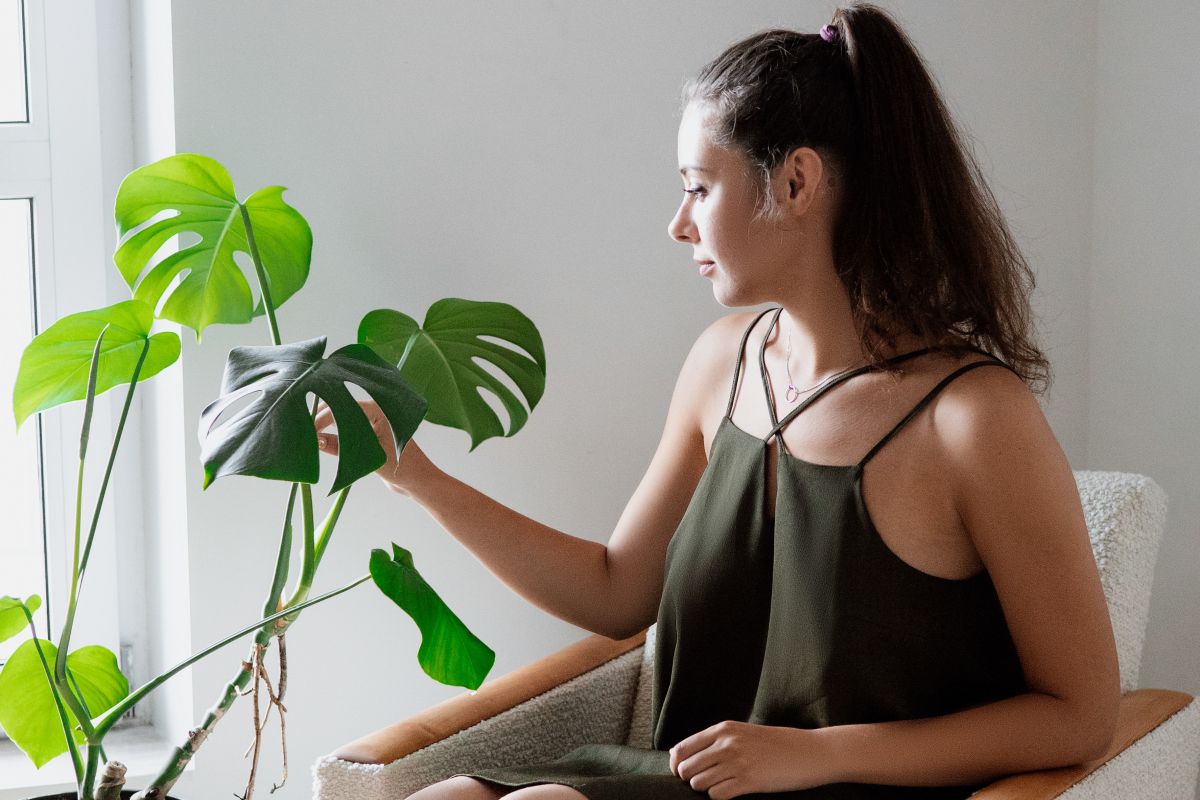
Flowering houseplants – Flowering plants are houseplants that are purchased mainly due to their blooms. As a general rule, flowering houseplants should be kept slightly damp (not soggy) at all times and this is especially important during their flowering phase as else, the blooms might die off prematurely.
Examples of flowering houseplants: Peace Lily (Spathiphyllum), orchid species (i.e. phalaenopsis, paphiopedilums), Anthurium spp.
Bonsai – A bonsai is a tree that has been pruned and kept small enough to be grown successfully as a houseplant in a container. Do not let your bonsai dry out between irrigations. The soil of a bonsai should be kept slightly damp at all times but not soggy as their root system might develop rotting issues.
Cacti and Succulents – Cacti and succulents are, in most cases, adapted to grow in a climate that is harsh and dry, and they have learned to store water in their leaves. During the growing season from spring to autumn, they should be watered roughly once per week, they need their soil to slightly dry out between watering them again. During winter – cacti and succulents should be barely watered but they should not be left without any water at all because once their water reservoir (internal water storage) is depleted, their leaves will start looking shriveled and their roots system might potentially start to suffer. You can water most indoor cacti / succulents roughly once per month during the dormant winter season.
However, the four plant types above are just super general guidelines to give you an idea. Different plant species have different water requirements.
In other words, there are multiple watering variables that will affect how often particular houseplants need water.
Environmental factors, stressors, age, genetics, and the health of the plant can greatly influence the irrigation (watering) needs of a plant. Sometimes even plants from the same species that might look similar can have different speeds of drinking! Consider plants as each pot on its own when it comes to watering them. That is why it’s a great idea to always stay on top of your plant’s water requirements and inform yourself about the particular needs of your houseplant.
Apart from plant-specific water needs, other factors will also affect how often a houseplant needs to be watered:
- Seasonal changes (as plants get less natural light, they slow down their growth and their watering needs usually decline)
- Light (i.e. how much light the plant is receiving?)
- Temperature (when temperatures drop, plants tend to slow down their growth and drink less)
- Growing media (i.e. how much drainage does a potting mix offer)
- The pot itself (eg: terracotta pots due to their porous structure allow better oxygen access to a plant’s root system) and the pot’s size
- Humidity (the higher the humidity, the less a plant will drink from its roots)
- Air circulation (if plants are exposed to direct wind, the surrounding air might be getting drier than usual and as a result, they might require more water)
- Dormancy (plant might become dormant due to stress or the different seasons, hence, if a plant is dormant, it usually won’t need to be watered at all)
- Stress (i.e. if the environment of a plant has been changed recently and rapidly, the plant might drink less than it usually does while acclimatizing to its new environment)
- A plant’s maturity (usually, older plants with larger and better-developed root systems, require water more frequently compared to young plants)
Note: The above-mentioned variables will also affect the watering needs of outdoor plants.
Does this mean that you need to keep a watering schedule for every single houseplant that you own? Absolutely not.
If you are a beginner houseplant owner, then it is a good idea to routinely inspect if your plants need to be watered until you get a hang of it and start recognizing the environmental factors that might change a plant’s water needs. Some may have similar light and watering schedules and it can help for beginners to put them together.
How often you should water your houseplant depends on…
Apart from the plant itself and its species as discussed above, there are environmental factors that affect the frequency of how an indoor plant would need to be watered.
Seasonal changes are one of the main triggers causing houseplants to change their water needs. For example, during the seasons of fall to winter, plants usually receive fewer hours of daylight, experience colder temperatures, and as result slow down their growth. Therefore, indoor plants need less water during the colder seasons and their watering schedule would need to be readjusted to prevent any rot-related issues.
Other environmental factors that can affect a plant’s water needs include light, humidity levels, temperature, wind drafts and blooming.
A plant placed closer to a window and receiving more light, will dry out quicker than one placed in a shadow location.
If the humidity is suddenly relatively high around a plant, the plant would be able to absorb moisture through the air with the help of its leaves. This ‘transpiration’ is especially the case with aroid plants. As a result, you might need to reduce the watering frequency.
If the temperatures suddenly drop (as during winter), the metabolism of a plant will slow down. As a result, the plant will go into a semi- or dormant stage where little to no new growth is seen. During this temperature-induced dormancy stage, the plant will in turn require to be watered less frequently. The opposite happens if the temperatures suddenly increase, as during the growing season from spring to fall.
Plants that are placed close to wind drafts, fans, heaters, and air-conditioners might dry out faster than plants being placed away from direct exposure to drafts. Some plants might even react negatively to being exposed to drafts, so keep in mind that your houseplant might need shielding if you notice that its leaves are droopy or if its foliage starts drying out and curling in.
Your potting medium can make all the difference when it comes to irrigating houseplants. Different types of potting mediums have different abilities to hold moisture and release it to the roots of the plants more or less balanced. Usually, compact potting mixes made from potting soil or coir, are able to hold much more water compared to, let’s say, high drainage potting mixes, like an aroid potting mix.
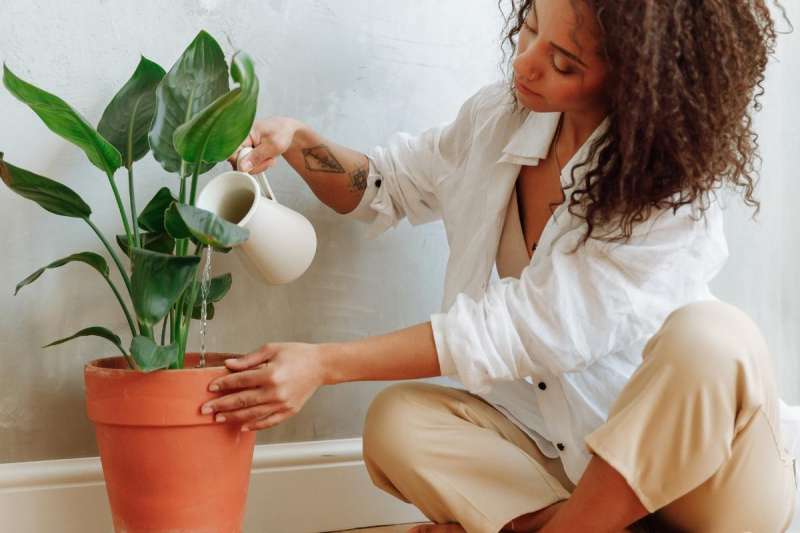
As mentioned before, the type of your plant and its current state will also influence how frequently it needs to be watered. Different plant species have different water requirements, so make sure to introduce yourself to them. We have loads of helpful and detailed plant care guides available at LEAFnJOY, so don’t miss on checking them out. Your plants will surely appreciate it! :)
The age and the health status of a plant also matter.
If your plant is young and has been placed in a planter where there is plenty of empty room, then it would need to be watered less compared to a fully established plant that has a huge root ball.
If your plant is stressed for some reason, eg: if your plant has been attacked by pests, has recently changed its home, or has been recently repotted, it would need some time to acclimatize and perk up. During this process, the plant would not drink (and not eat) as much as it normally would do so if you notice that your houseplant is stressed, make sure to not drown it.
How to Check Whether a Plant Needs Water
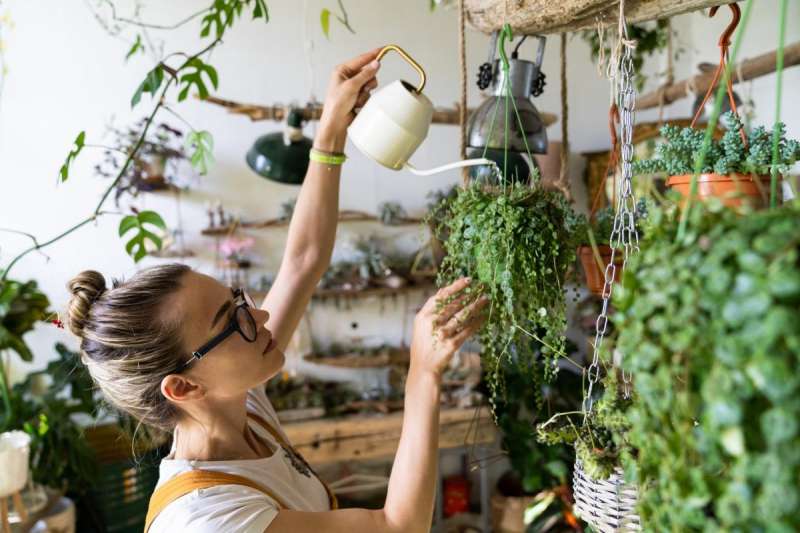
You can use a moisture meter to check if your plants need to be watered. Keep in mind, however, that most moisture meters work based on conductivity level detection. Water, usually, has high conductivity and thus, if moisture is present in the soil, the moisture meter will show it.
But moisture meters have their flaws as they do not work for all types of potting mediums. For example, if your houseplant is planted in a potting mix that has a lot of drainage (eg: an aroid potting mix), the moisture meter might not be able to adequately detect and “read” the moisture in the soil and might show predominantly: low moisture, and as a result, you risk over-watering your plants. Bummer!
Don’t have a moisture meter on hand? No problem. Here’s a free way to tell whether your plant needs a drink or not.
A better test to conduct to check if your plants need to be watered is using your index finger. Let’s refer to it as the rule of thumb, er… the rule of the index finger!
Checking the soil moisture with your finger is easy. Depending on the plant’s species, you might need to check the soil at different locations if it’s dry before watering, for example:
- Check if the top layer of the soil is dry for most moist-loving plants
- Insert your index finger inside the soil at a couple of spots. Depending on the size of the pot, you might need to insert your finger deeper
- Check the moisture level at the drainage hole if you are dealing with a plant that prefers less water
Signs that a plant needs to be watered:
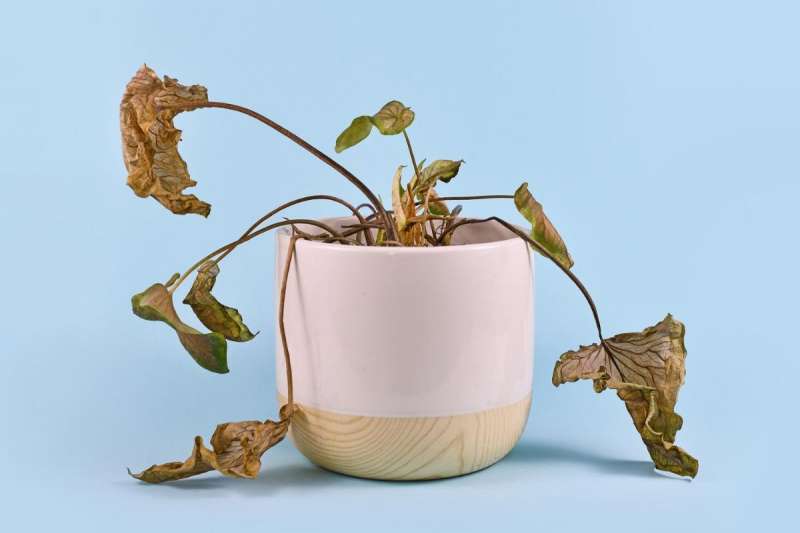
Apart from testing the potting soil for moisture before watering a plant, there are other means to tell whether a houseplant (or any potted plant) needs to be watered immediately or whether it would be better to wait a couple of days.
Tell-tale signs that an indoor plant needs to be watered are:
- droopy, wilting leaves or blooms
- the leaves develop dry, crispy edges
- the pot is light
- new growth is stunted
- die-off of blooms
- the leaves feel soft and thin
- wrinkles on the stem of the plant
Usually, if a plant has suffered stress due to lack of water one or twice, it won’t suffer any long-term effects. However, routine underwatering of a plant might lead to loss of vigour and lack of new growth. In extreme situations, whereas a plant has been left without water for prolonged time, it might eventually result in the death of the plant.
Signs of an overwatered plant:
As mentioned, giving plants too much water (and too frequently) is perhaps the number one cause of why plants suffer from various diseases and might not always make it. One of the biggest challenges to master of many home growers is this: how often to water houseplants.
Overwatering leads to a plant’s roots getting suffocated due to too much moisture and not having access to adequate supply of oxygen. Apart from that, whenever the growing media is kept constantly wet, it is the perfect breeding ground for harmful plant pathogens. As a result, a plant that has been overwatered might start suffering from rot-related issues.
Most plants, even if they have been overwatered once or twice, can be saved if the problem has been caught early on. So here are signs and symptoms that a plant has been overwatered:
- leaves turning yellow (usually, the oldest leaves will start turning yellow first)
- wilting leaves
- dark brown and soft spots on the leaves
- moldy or unpleasant smell around the plant’s pot
- white mold /and or soil mites can be visible on the top of the pot
- mushy, dark spots on the stem
- stunted growth
- blooms rot and die
- the pot is consistently heavy
How to Water Houseplants
Or in other words: what are different ways to water indoor plants? Or any plant in a pot really.
There are 3 main types of watering methods when it comes to potted plants (both indoor and outdoors ones), grown in soil mixes (not hydroponics or semi-hydro).
Watering Plants from the Top
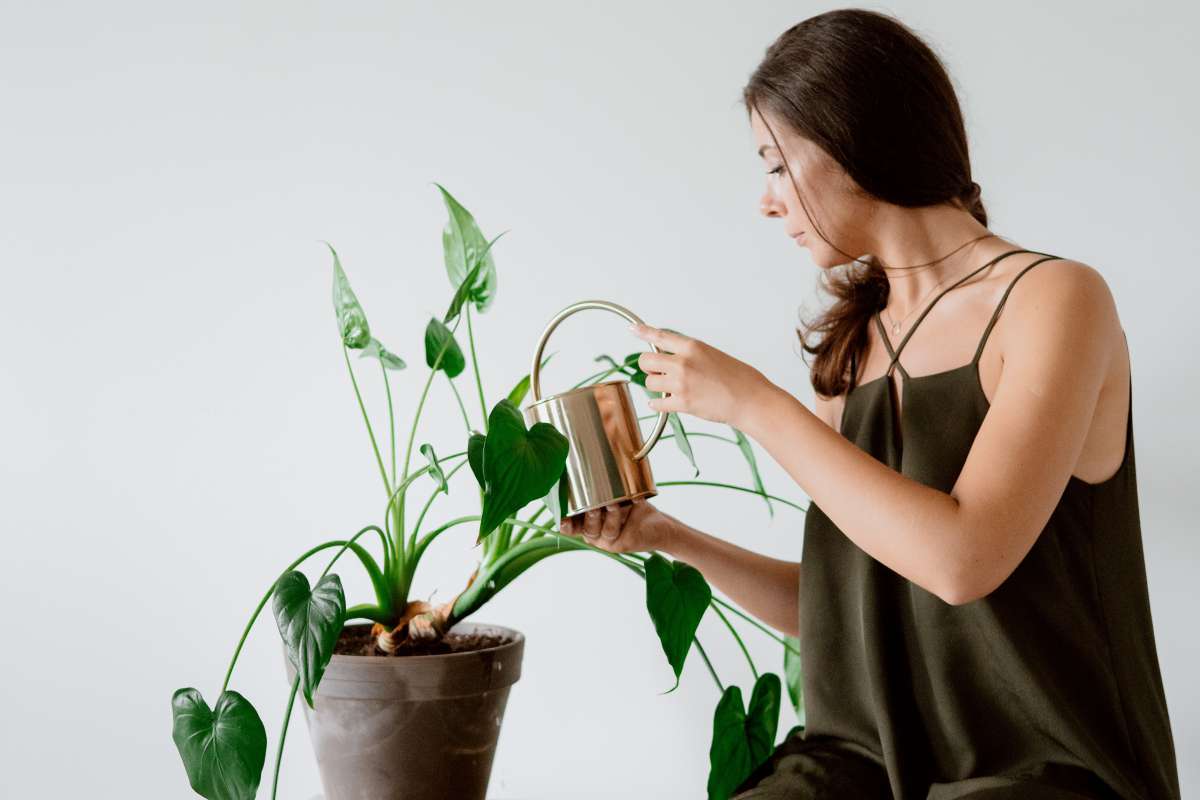
Top watering plants, i.e. from the top of their pots, is perhaps the most common way to water indoor and especially outdoor plants.
Basically, you pour water on top of the plant’s soil, trying to cover the entire visible area until water starts running out of the drainage hole. By allowing water to start dripping from the bottom hole of the pot, extra salts are flushed out which might have led to salt burn otherwise.
Afterward, excess water in the saucer should be removed. If you notice that even after 30 minutes there is still excess water in the plant’s saucer or in the decorative pot, dump it out to avoid the plant from re-absorbing flushed out salts or/and rotting issues.
Whenever you are watering your houseplant (or outdoor plants, especially ones with large leaves), make sure that the plant’s leaves are not getting any water on them to avoid fungal and bacterial diseases.
How to Water Plants From the Bottom
Bottom watering is a technique whereas the potting media is saturated from the bottom instead from the top. This method is used to soak the bottom part of the roots. Bottom watering plants is especially useful if the plant’s species grows longer roots that are closer to the bottom that might not be properly irrigated through top watering or whenever the potting mix tends to become hydrophobic. Bottom watering a plant can also be a great method to promote root development in recently planted cuttings.
To bottom water your plant, fill its saucer or a tray that stands below its pot and wait for the plant to absorb all the water it wants for about 30 mins. After that, the saucer should be emptied from any remaining water. Make sure that you don’t leave the plant staying in water for too long to avoid rot-related issues.
If you are using a decorative pot for your plant instead of a saucer, ensure that the water level covers up to ⅓ the height of the pot. This way, water can be efficiently absorbed through the plant’s medium and the roots can be well saturated.
Since bottom-watering a plant doesn’t rid the potting media from excess salts, it’s advisable to flush your houseplant once every month through top-watering.
How to Water a Plant Through Immersion
Immersion watering is plants watering method that is very similiar to bottom-watering a plant. Immersion watering an irrigation technique used to saturate the entire soil inside of a pot. You can immersion water your plant by placing it in a large container and filling the container with enough water to cover the bottom ⅔ of the pot. After a good hour, or until you see that the top of the soil is moist, you can remove the plant from the water container and return it to its original location.
Usually, extremely drought stressed plants will benefit from immersion watering.
Which Water is Best for Plants
In other words: the type of water you use to water your plants can affect their health and growth.
Providing your indoor and outdoor plants with good water quality is essential to their development and well-being.
Can you use tap water to water indoor plants? Tap water can be used for the majority of houseplants without any issues. To avoid the harmful effects of chemicals in tap water, make sure that you allow the water to stay for at least 24 hours before giving it to your plants. Chlorine, for instance, is a common harsh chemical used in common tap water to clear it of impurities and bacteria and can be damaging to the roots of a plant. Especially young plants or cuttings that have just formed roots can be negatively affected by chlorine.
How does hard water affect plants? If the water at your home is quite hard (i.e. has high mineral content), it could be damaging to some plants. If you notice that your plants are suddenly losing vigor and that white calc-induced spots start forming on the leaves, it could be your water is too hard for your houseplants.
You could use a water purifier before offering it to your plants or switching to an alternative water source.
Tip: Is the water at your home hard? If you notice regularly water stains on your cups or sink after washing, chances are that you have hard water at home.
Certain plant species (Carnivorous plants, I am looking at you), are too delicate and will not tolerate tap or just any water. So please, if you have a carnivorous plant at home, don’t use tap water for it. Sensitive plant species, young plants or cuttings will do best if provided with rain or distilled water.
Rainwater is amazing for plants as it contains a lot of vital nutrients and is usually in the best PH range for most houseplants. But not everyone can gather rainwater with ease, which is understandable.
An alternative to use for sensitive plants would be then distilled water. Keep in mind, however, that you should use pure distilled water that has been distilled through the use of a distiller. Chemically-purified water is not recommended to water your plants with, as the chemicals used to break down the minerals and purify the water are damaging to the plants.
Distilled water also has essentially no nutrients, so make sure to not skip on adding nutrients to it, as else your plant might lose vigor.
Water Temperature Matters
Whenever you are watering your houseplants, make sure that the water you are using is at room temperature. Many species will react negatively if their roots experience a cold-or-hot shock due to the temperature of the water being too cold.
The best water temperature for watering plants is between 16.5°C to 24°C (62°F to 62°F). This applies to both indoor and outdoor grown plants. When the water is in this range, it’s neither too cold nor too cold for your plants, and sufficient amount of dissolved oxygen is still present.
Using water for plants that is too cold can lead to stunted growth and might even damage some roots. On the other hand, watering plants with water that is too warm might lead to rot-related issues.
How to Water Houseplants: Final Thoughts

Watering your indoor and outdoor plants is crucial to their health and growth, but it can also be the most challenging factor to master.
Somehow indoor plants are more prone to suffer from water-related issues, namely, overwatering compared to outdoor ones. Thus, meeting your houseplants’ watering needs (requirements) is crucial to their survival, so it is important to never water your plants blindly.
As discussed in this detailed guide on how to water houseplants (and not overwater them!), once you grasp the basics of how much and how often does your plant needs water, taking care of plants becomes easy.
The watering needs of a particular plant will depend on the species, seasonal changes, light, and others. So make sure to always consider these variables when adapting a watering schedule for both indoor and outdoor plants.
But don’t you worry. With this article, and some practice, you will be able to easily keep your houseplants healthy, happy and flourishing for years to come! :)

